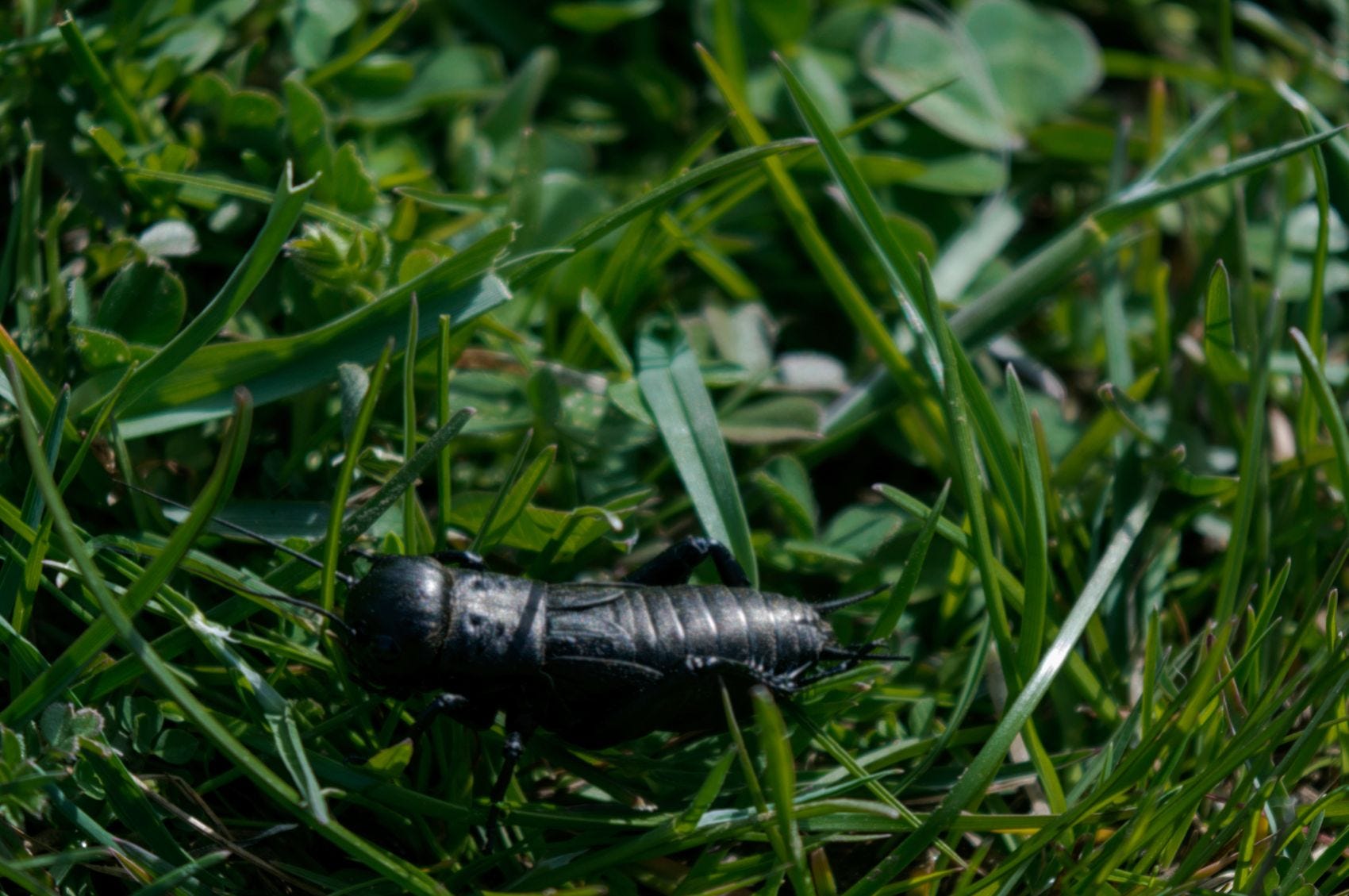Common Species: Fall Field Cricket
When most people think of a cricket, the fall field cricket (Gryllus pennsylvanicus) is the cricket they see in their mind’s eye. Dark in color, this cricket is a solitary insect that can be found in yards and flower beds. This species is often confused with the spring field cricket (Gryllus veletis), which has a similar appearance and range.
For the most part, fall field crickets aren’t much of a pest. They only become bothersome in the autumn when they seek food or shelter inside of buildings as summer temperatures begin to cool.
Appearance
Adult fall field crickets measure between a half-inch to one inch long and are dark brown or black in color. Their dark coloration helps them hide in shadows, which makes them difficult to spot if they get inside your home.
The characteristics that best describe the fall field cricket are:
- Black or dark brown exoskeleton
- Long antennae
- Adult body length: ½ inch to 1 inch
- Six legs, hind legs are enlarged
- Strong and rapid jumpers
- Has wings but most species cannot fly
- Chirps at night and silent when feeling threatened
Habitat

In local habitats, look for fall field crickets in forest edges, yards and around buildings. They create shallow burrows or find suitable shelter as needed.
Their hiding places include:
- Wood or debris piles
- Leaf litter
- High grass
- Under appliances or furniture
- Under pet dishes, trash cans or lawn ornaments
- In crawl spaces
- Edges of carpeting
- Under sinks
- Inside closets
- In hollow spaces behind baseboards
Geography
Fall field crickets are found in most of the U.S., Canada and Mexico. In the U.S., the southeastern states see a similar species. Their range also doesn’t include the desert southwest.
Diet
Fall field crickets are omnivorous and have a wide diet that includes plant matter, fruit, seeds and other insects. Inside a home, they may damage wool, cotton, silk, nylon, leather and even rubber. Crickets eat at night, and they must eat their body weight (or more) each night.
Threat
Fall field crickets can be extremely irritating to humans when they enter our homes since they may chirp nonstop from dusk until dawn. This can result in a loss of sleep and loss of daytime productivity for many people.
Beyond that, fall field crickets pose a minimal threat to people and properties. They may eat ornamental plants or agricultural crops, but only do significant damage when large populations emerge. These insects will enter homes and other buildings in late summer or early fall and may inflict minor damage to some material before they die.
Reproduction
Fall field crickets chirp to attract mates, with the loudest crickets attracting the most females. The problem is that loud crickets also attract predators, so a balance between being discreet and loud must be achieved to successfully attract mates.
After mating, female fall field crickets deposit about 400 eggs in groups of 50 in moist soil. Eggs laid late in the season overwinter and hatch the following spring. Otherwise, eggs incubate for up to 25 days and hatch into nymphs. The young grow quickly, molting eight times until reaching adulthood.
Control Options
Two different approaches must be made to control crickets: one for outdoor fall field crickets and another for crickets that make it inside.
Inside:
- TERRO® Spider & Insect Traps - Sticky traps used to capture crickets and other bugs.
- Scorpion Killer Spray or Ant Killer Spray - Kill-on-contact insecticide that lasts up to 6 weeks.
- Spider Killer Spray - Use this spray indoors or outdoors to kill on contact.
- TERRO® Ant Dust - Fine insecticide powder for application in cracks and crevices.
Outside:
Use any of these TERRO® products to create a cricket-killing zone around your home, garage or other structure:
- TERRO® Perimeter Ant Bait Plus - Weather-resistant granular bait.
- TERRO® Ant Killer Plus - Granular insecticide with a built-in spreader.
- TERRO® Ant Dust - Waterproof dust that continues to kill for up to 8 months.
- TERRO® Multi-Purpose Insect Bait - A multi-purpose insect bait in a shaker canister.
